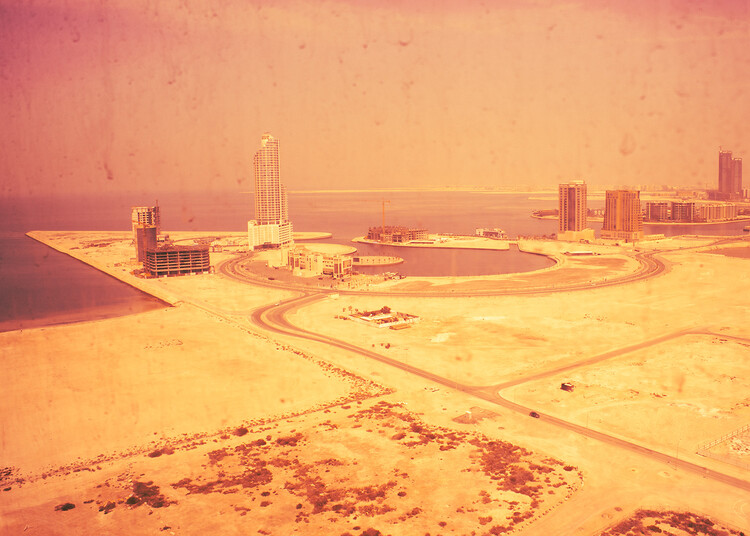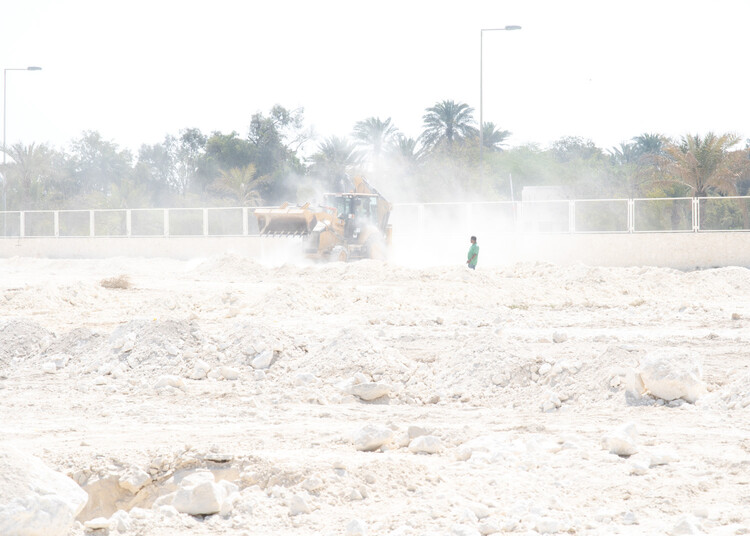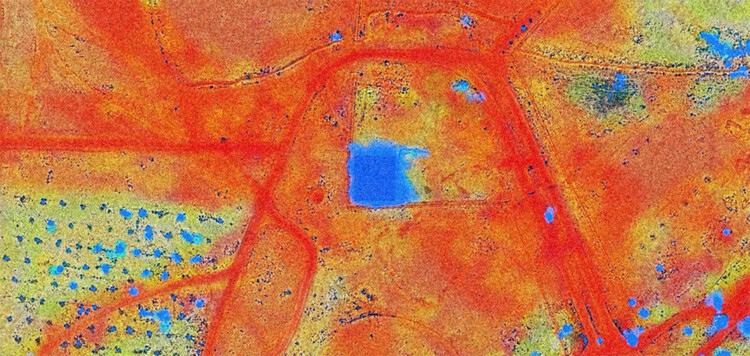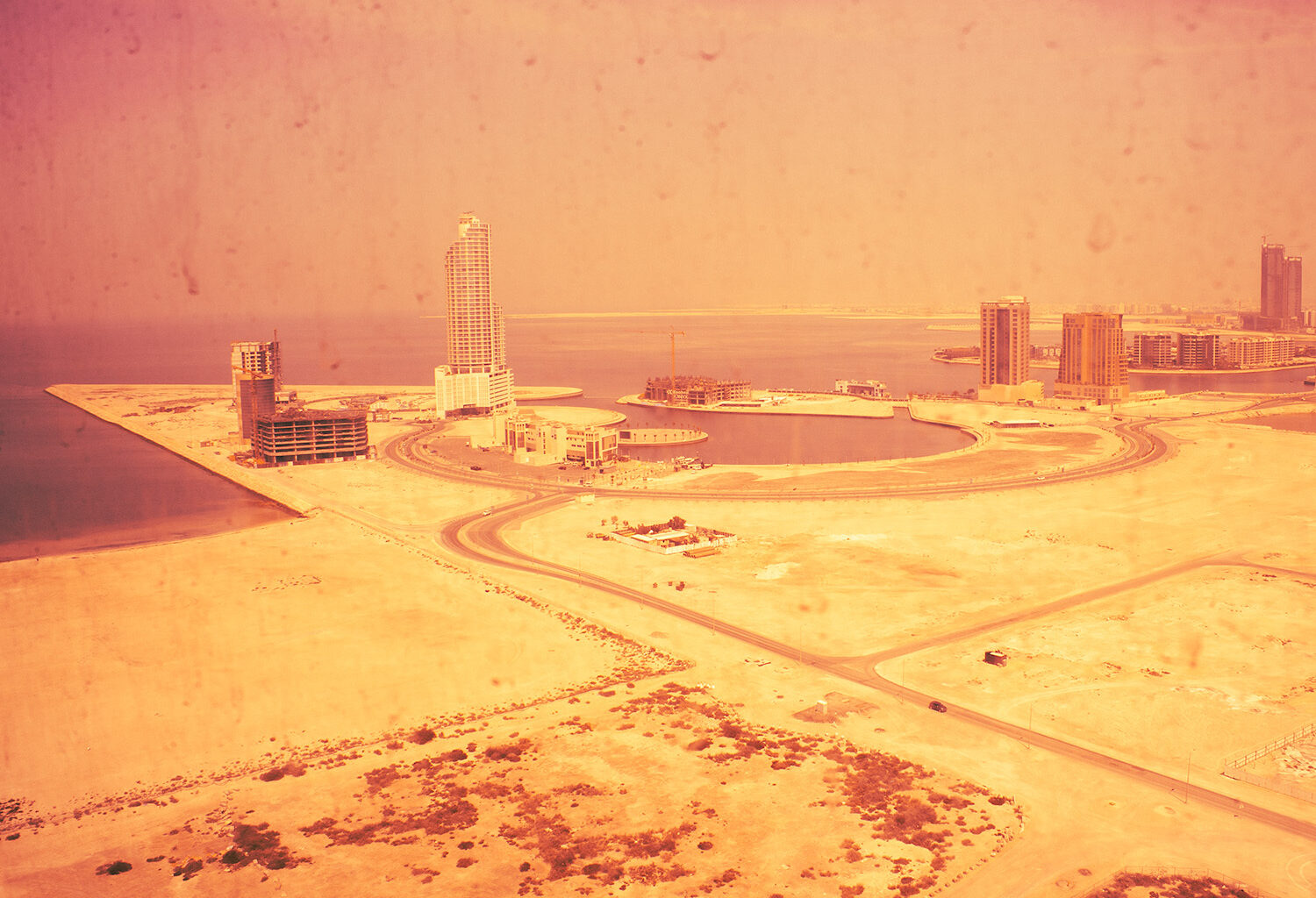 Bahrain Pavilion, Feaver Shape, Bahrain, 2025. Image © Eman Ali
Bahrain Pavilion, Feaver Shape, Bahrain, 2025. Image © Eman Ali
Share
Share
Or
https://www.archdaily.com/1029758/bahrains-2025-venice-biennale-pavilion-addresses-the-global-issue-of-extreme-heat
The Kingdom of Bahrain presents Heatwave, its national pavilion at the 19th International Architecture Exhibition of La Biennale di Venezia. Curated by architect Andrea Faraguna and located in the historic Artiglierie of the Arsenale, the pavilion addresses the pressing global issue of extreme heat. Through a site-specific installation, Heatwave reimagines the design of public space by exploring passive cooling strategies rooted in Bahrain’s climatic realities and cultural context. The project aims to offer a speculative yet grounded architectural response to the environmental urgency shaping urban life today.
 Bahrain Pavilion, Feaver Shape, Bahrain, 2025. Image © Eman Ali
Bahrain Pavilion, Feaver Shape, Bahrain, 2025. Image © Eman Ali
Inspired by Bahrain’s traditional architecture and reimagined through contemporary strategies, the design presented in Venice explores passive cooling strategies by integrating a geothermal well and solar chimney, connected through a thermo-hygrometric axis that links underground conditions with exterior air. This axis defines a compressed, elemental space articulated by a modular floor and suspended ceiling, an inhabitable volume that hosts visitors while framing curated views of its surroundings. In the exhibition space at the Artiglierie dell’Arsenale, where excavation for a geothermal well is not feasible, the system adapts through mechanical ventilation, drawing air from a canal-facing window and channeling it through a network of ducts and nozzles to generate a calibrated microclimate that reflects the project’s environmental ethos.
 Bahrain Pavilion, Heat map of a construction site in Askar, Bahrain. Image © Andrea Faraguna
Bahrain Pavilion, Heat map of a construction site in Askar, Bahrain. Image © Andrea Faraguna
The pavilion’s architectural design is defined by a distinct floor and cantilevered ceiling of identical dimensions, supported by a single central column. Designed as a modular unit, the system allows for scalable implementation in various urban contexts. Developed in collaboration with structural engineer Mario Monotti and thermomechanical expert Alexander Puzrin, the system reimagines vernacular cooling techniques through contemporary design and engineering, offering a passive, low-impact alternative to conventional climate-control infrastructures.
Related Article Discover the Full List of Special Projects and Participants of the 2025 Venice Architecture Biennale
The study’s conclusions are especially pertinent to outdoor work areas and construction sites in the Gulf region, where extreme heat presents significant technical and social difficulties. The Bahrain Pavilion introduces adaptable, modular structures providing shaded and temperature-controlled rest zones, illustrating how inventive design can improve both comfort and environmental responsibility in demanding climates. The construction site is highlighted as a key intersection of climate, architecture, and social fairness, a concept symbolized in Venice by a conceptual landscape of earth and sandbags, emphasizing the link between constructed spaces and the labor involved in their creation. Accompanying the installation, a publication expands the project’s scope through technical analysis and speculative inquiry. Bringing together expert essays, climate data, field research, and historical precedents, the publication offers a broader framework of the pavilion’s physical installation.
 Bahrain Pavilion, Feaver Shape, Bahrain, 2025. Image © Eman Ali
Bahrain Pavilion, Feaver Shape, Bahrain, 2025. Image © Eman Ali
The Venice Architecture Biennale 2025 will run from May 10 to November 23, hosting a total of 65 National Pavilions. Among them, four countries, Azerbaijan, Oman, Qatar, and Togo, will be participating for the first time. The Azerbaijan national pavilion will present Equilibrium. Patterns of Azerbaijan and the Republic of Togo will present the exhibition titled Considering Togo’s Architectural Heritage. Other pavilions from the event include the Pavilion of Germany, which will expose visitors physically and psychologically to the future urban climate and the Brazil’s exhibition (RE)INVENTION, which reflects on the recent archaeological discovery of ancestral infrastructure in the Amazon.
We invite you to check out ArchDaily’s comprehensive coverage of the 2025 Venice Biennale.
